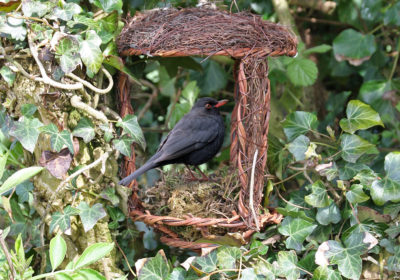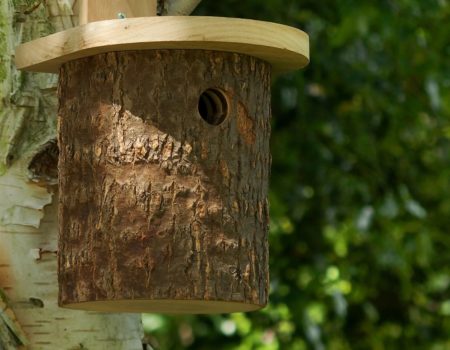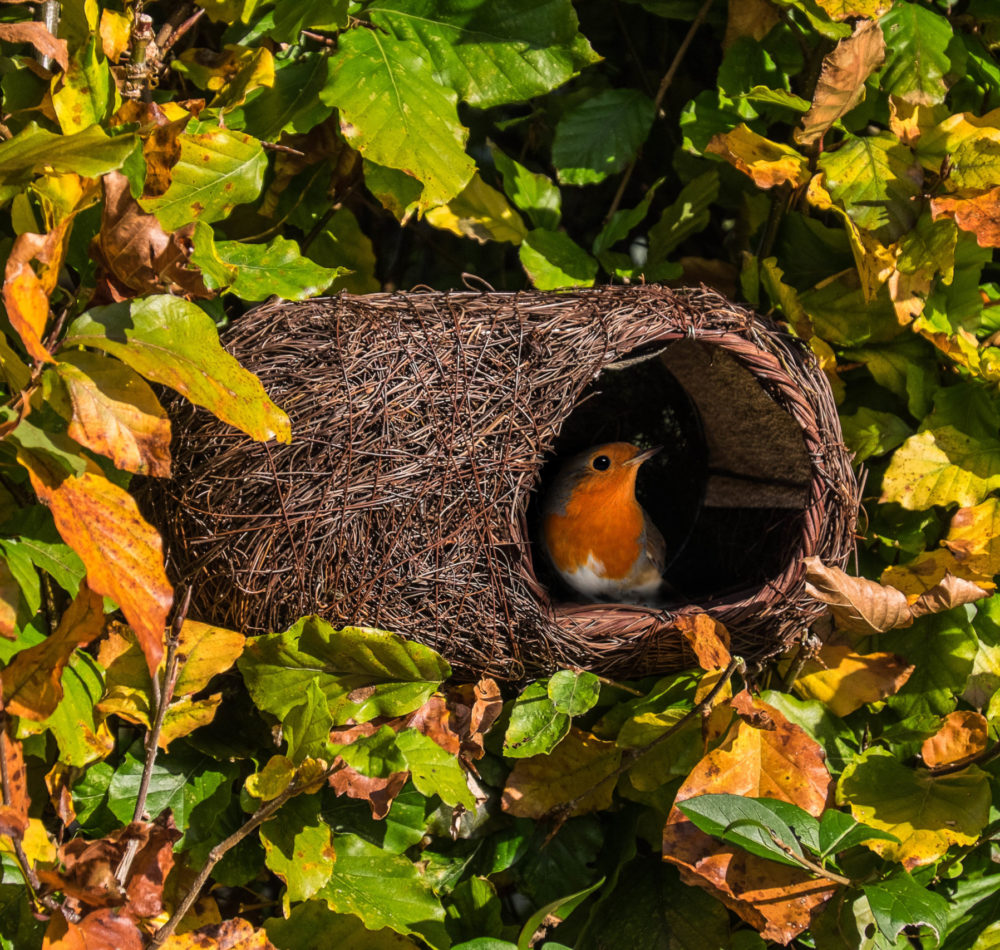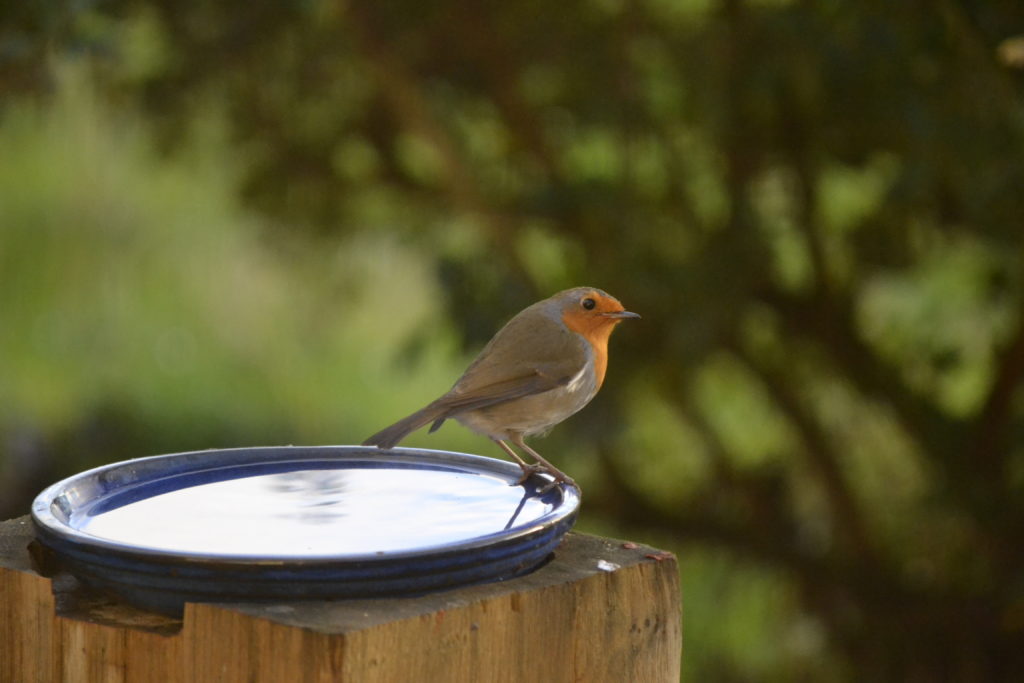National Nest Box Week
National Nest Box Week is an annual event that takes place every year from the 14th – 21st of February. It has now been running for over 20 years and is considered an important part of the ornitholigical calendar.
The date, the 14th of February, is a well recognised day – Valentine’s Day! This date was chosen as it is around the same time that birds will also be ‘coupling up’ in readiness for their nesting and breeding season ahead. As such, the National Nest Box Week is hugely important to these hopeful pairs of ‘love birds’as we all try to help promote the conservation of diversity and wildlife.
In these current years, it is getting harder and harder for our native birds to find suitable nesting sites. A reason for this is because there is a distinct lack of natural holes in our gardens, yards and parks. For every new bird box that is put up, it is simply replacing the natural cavities from our natural architecture that have been in declines for decades.
During early to mid-February, keep an eye out for the activity levels of your garden birds, they will likely be very busy trying to find suitable nesting sites to start building their nests . You will probably see them flying around with twigs, dried grass and natural fluffy fibres stuffed into their beaks as they start the incredible job of building their intricate nests!

Why are nest boxes important?
Nesting boxes and bird houses provide vital shelter and protection for birds, their eggs and baby chicks. A huge number of their preferred nesting sites just don’t exist these days; now holes and cracks in buildings are covered up, broke roof tiles are replaced, and old hollow trees are ripped down all too readily. As such, our birds have come to rely more and more on us providing these homes for their survival and to raise their young and offer a much greater chance of their survival, for the year ahead.
Whilst nest box week starts on February the 14th there is no reason why you cant put your boxes up in the Autumn. Some birds will still use these boxes year-round to escape from predators or for shelter in the cold and wintery months. With the addition of nest boxes in your area, you may also see different bird species coming into your garden.
Don’t forget spending time in the outdoors, putting up the boxes and watching your birds is incredibly beneficial for your overall health and wellbeing – so its not just the birds you could be helping!
Features of a good nest box

Unsure which type of nest box to get, where to hang it and who likes what?
These are the big questions when it comes to knowing what type of box/nest you need to pcut up and where you need to site it. Different birds like completely different nesting sites, its not one size fits all – literally! Blue Tits, Crested Tits and Coal Tits all prefer a box with a 26-28mm hole, where as Starlings need at least 42-45mm holes. Robins, Wrens and Blackbirds prefer open nests, whilst House Martins, Swallows and Swifts need completely specialist nests.
Knowing what birds you’d like to attract in your bird boxes will help you make the decision of which box you’ll need to hang. Don’t worry, we will go through this in more detail and help you with what you will need for different species a little later. Alternatively, discover our nest boxes or specialist nest boxes page to see who we can cater for.
Here are some useful tips to think about that will apply to most species and boxes such as:
- Choose an undisturbed spot, with trees and greenery nearby – try to avoid putting the nest box too close to any perches, branches and twigs so predators don’t have easy access to the box.
- The entrance or hole should ideally face north-east or east so it’s not in direct sunlight all day, facing the morning sun is always preferable to warm up the nest and its precious eggs after the cold nights.
- Hang the box as early in the year as you can, even in the Autumn so the birds can use it to roost and shelter, therefore they will be used to this site come breeding season.
- The nest box needs to be at least 1.5 to 2 metres off the ground.
- Dont hang the boxes too close together. You will need to leave a gap of at least 3 meters between boxes for different species and at least 10 meters for the same species, otherwise this can cause arguments between birds marking out their own territories and lead to wasted energy.
- Boxes should be placed away from your feeding areas where there may be high levels of bird activity, as this can disturb nesting pairs.
How can you get involved in National Nest Box Week 2023
National Nest Box Week is the perfect opportunity to get involved with your local wildlife and help to protect and provide a safe haven for birds as well as other wildlife. Installing a nest box in your garden is a great way to protect and conserve local wildlife.
Its quite simple, all you need to do is add just one (or more if you can) new nesting opportunities for your birds. This could be a box you buy, making your own, or even by leaving an old, hollow tree you may really want to cut down. Anything you are able to do to create an extra hole in your garden or wildlife area.
Keep an eye on your nests, hopefully, it will attract a breeding pair who will make it their home for the spring and summer. We promise that you will get nothing but joy from this experience! Watch as the parents come and go whilst making their nest and once the eggs hatch, you will get all sorts of wonderful sights with the feeding of the babies. Please try not to disturb the nest at any stage, you can gently check inside if you have a box with a hinged lid, but never touch the nest, eggs, babies or parents as you could scare off the parents and they will not return.
You can also provide feedback to the British Trust for Ornithology here. This can provide incredibly valuable data to support conservation efforts.
Bird species and their nest box requirements
Be sure to know which box/ nest you are looking for and ensure that it will provide the correct criteria for the species you are looking to attract. Here is our list of species and their home requirments:
- 26mm and 28mm hole boxes – these will mostly be preferred by small species such as Blue and Coal Tits.
- 32 and 34mm hole boxes – these nest boxes are suitable for slightly larger species such as Great Tits, Sparrows and many more similar sized birds.
- Open front boxes – are favoured by a large number of species including Robins, Wrens, Blackbirds, Spotted Flycatcher and Pied Wagtails.
- 45mm hole boxes – these boxes are favoured by Starlings.
- Sparrow terraces – they are a great idea if you have a large number of House Sparrows. They are a colonial species so prefer to nest close together.
- House Martin Nests – they are unique as they replicate the nests they would naturally build in the eaves of buildings, thus these nests are built to be mounted, just under the roof.
- Swallow Nests – these will be suitable for Swallows and Swifts. For a Swift it must be placed at least 5 metres off the ground and can be mounted on or built into a wall, with a clear flight path. For Swallows, these should be sited within an enclosed area such as a porch or outbuilding. They will need the building to have easy access through a window or open door. It should ideally be 1 meter between nests and at least 6cm of free space above it.
- Owl Boxes – these can vary depending on species. We can make these bespoke so please get in touch!
- Wildlife habitats – they are hugely important for your local bird population. If the wildlife is healthy the bird population will be much healthier too.

Taking part in the National Nest Box Week can only be positive for your local wildlife. There really isn’t a reason to not take part! Ensure you are still providing high energy food sources for your birds. Seed mixes, Suet products and Straight seeds are still hugely important as your little feathered friends need large amounts of energy during this season to help with nest making, egg production, egg sitting and feeding their young.
Many parent birds will favour giving their young chicks bugs, grubs and flying insects such as caterpillars and flies. This means they will rely on food given by us for their own energy sources whilst they are out looking for food for their chicks all day long.
We hope you have a successful Nest Box Week, and season, as we collectively keep trying to our best to help wildlife survive and thrive through these challenging times.
Planning to take part or already have a bird box? Tag us in your images on Instagram and Facebook with the hashtag #nationalnestboxweek!

